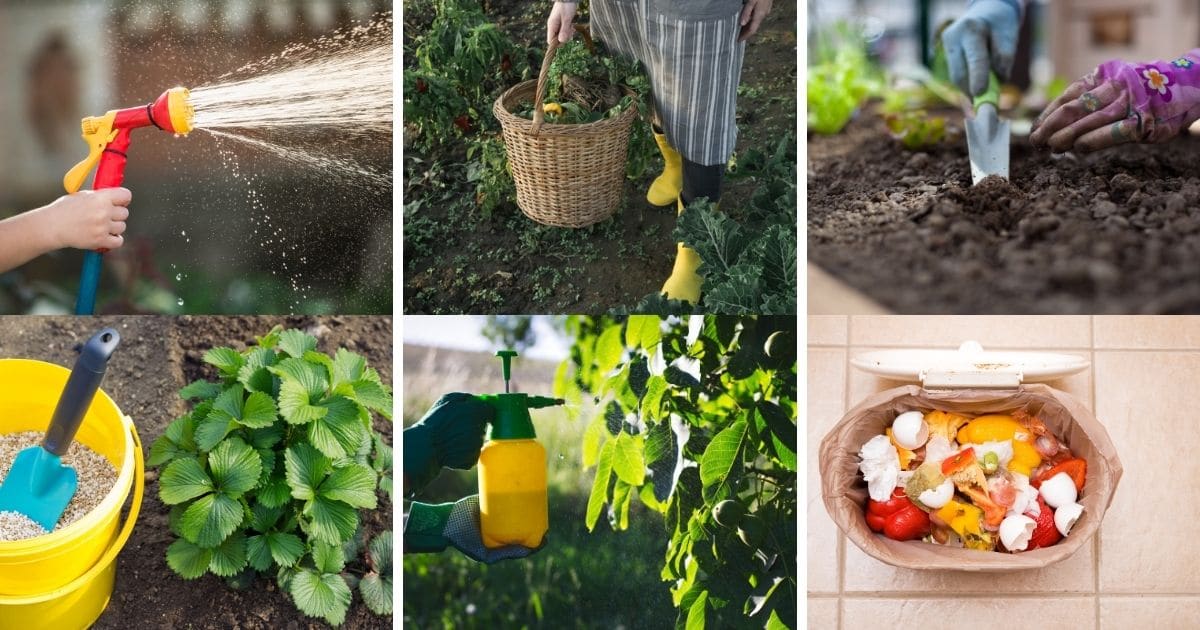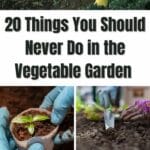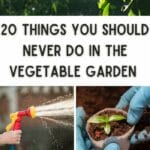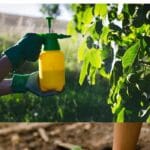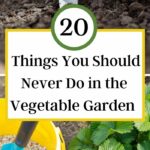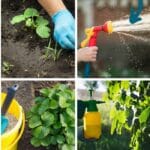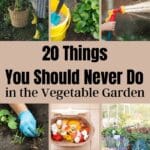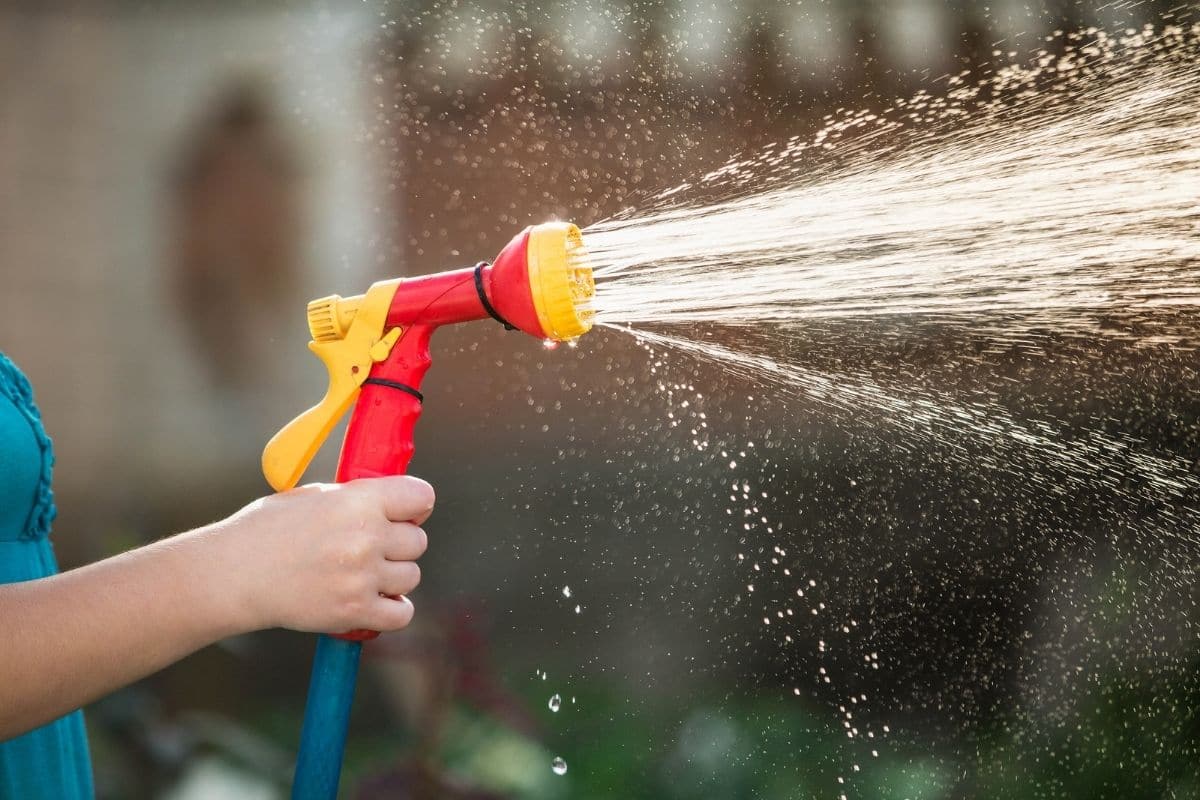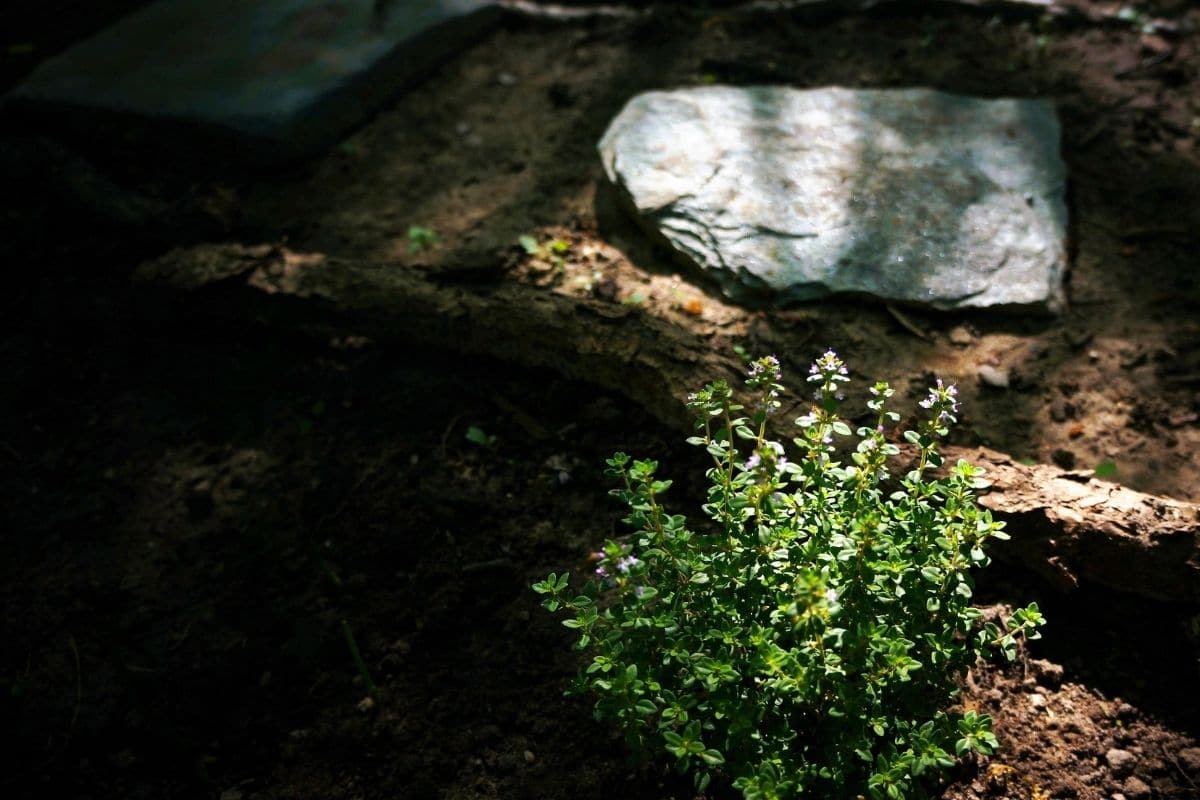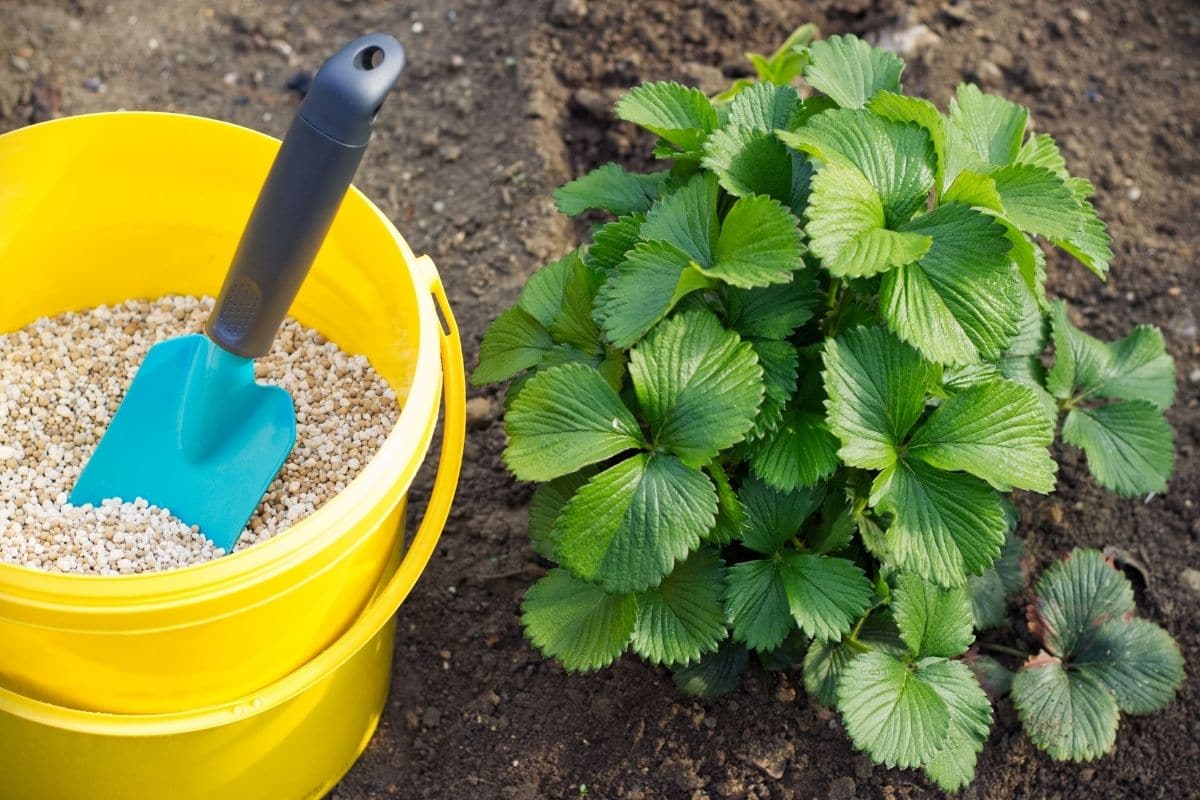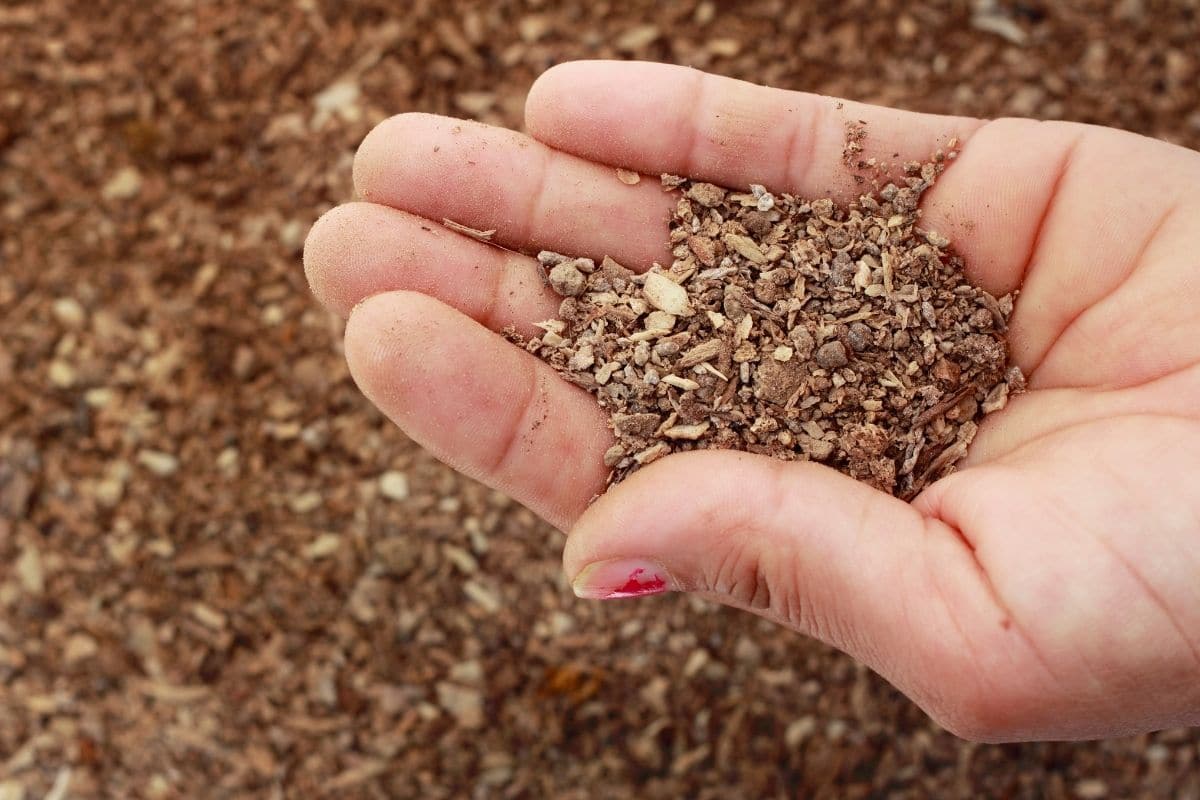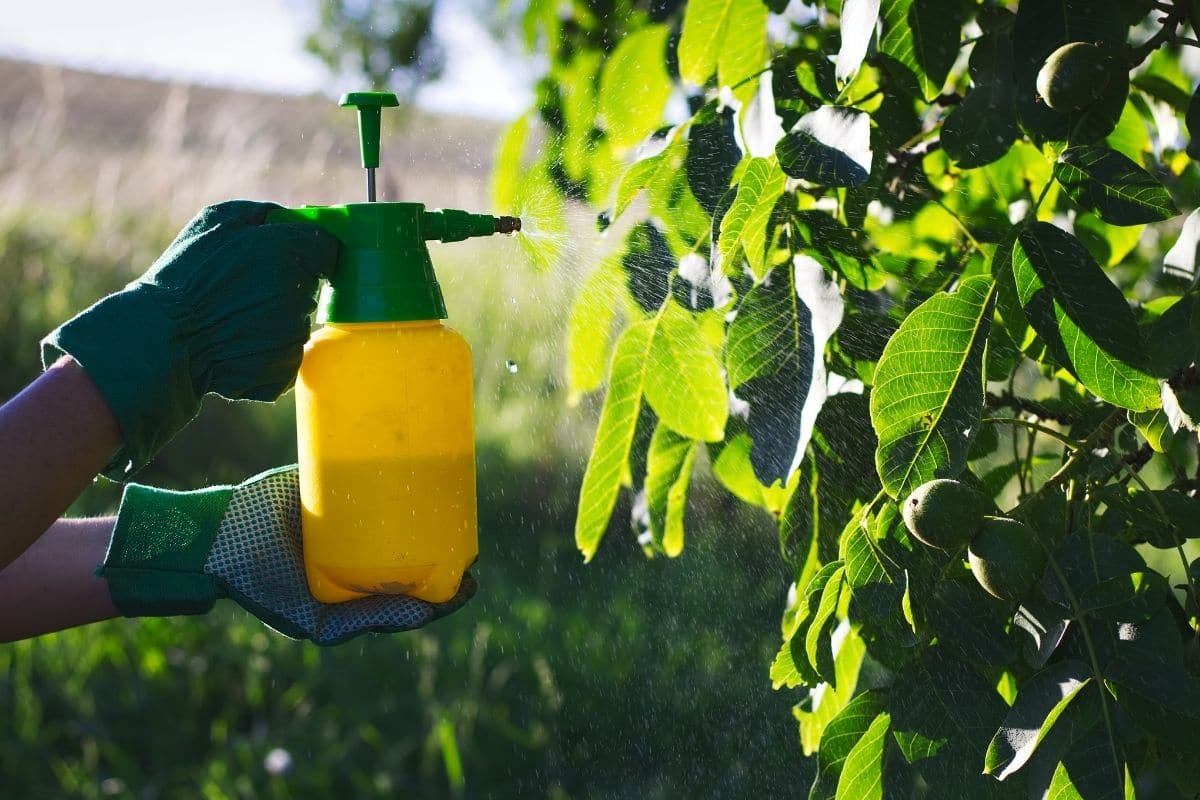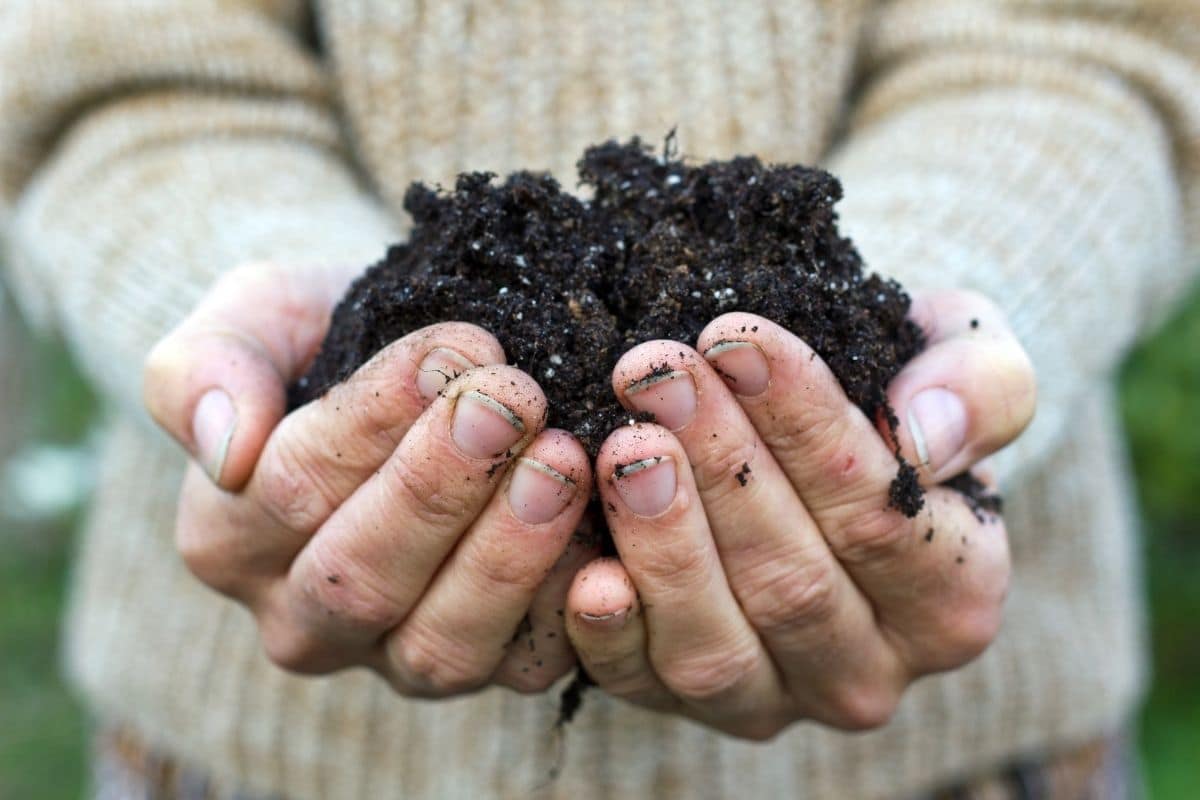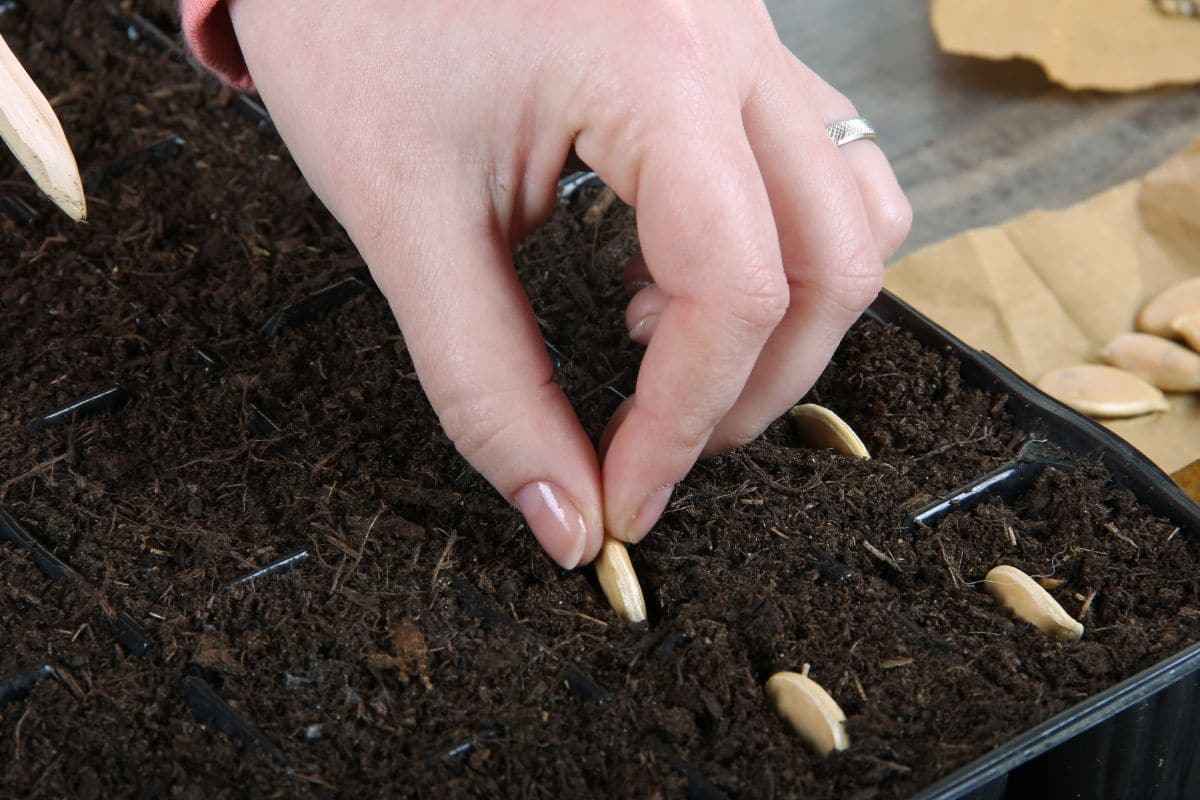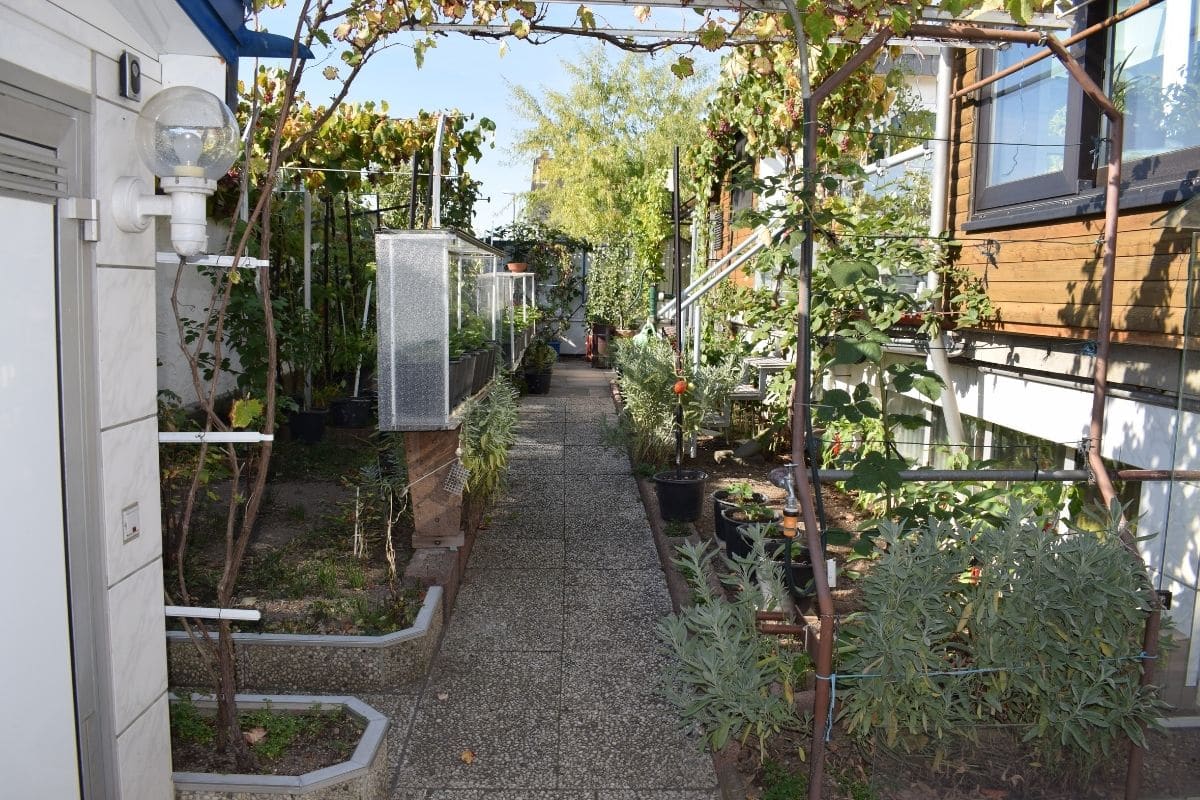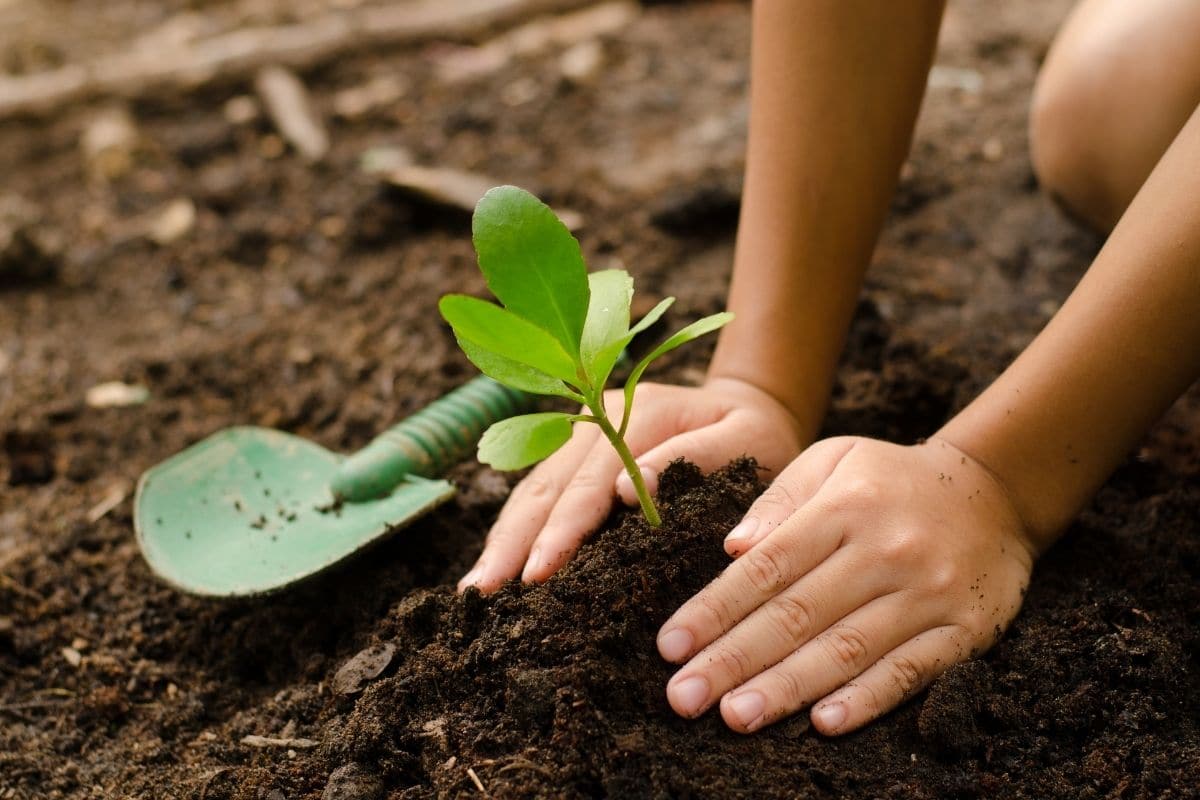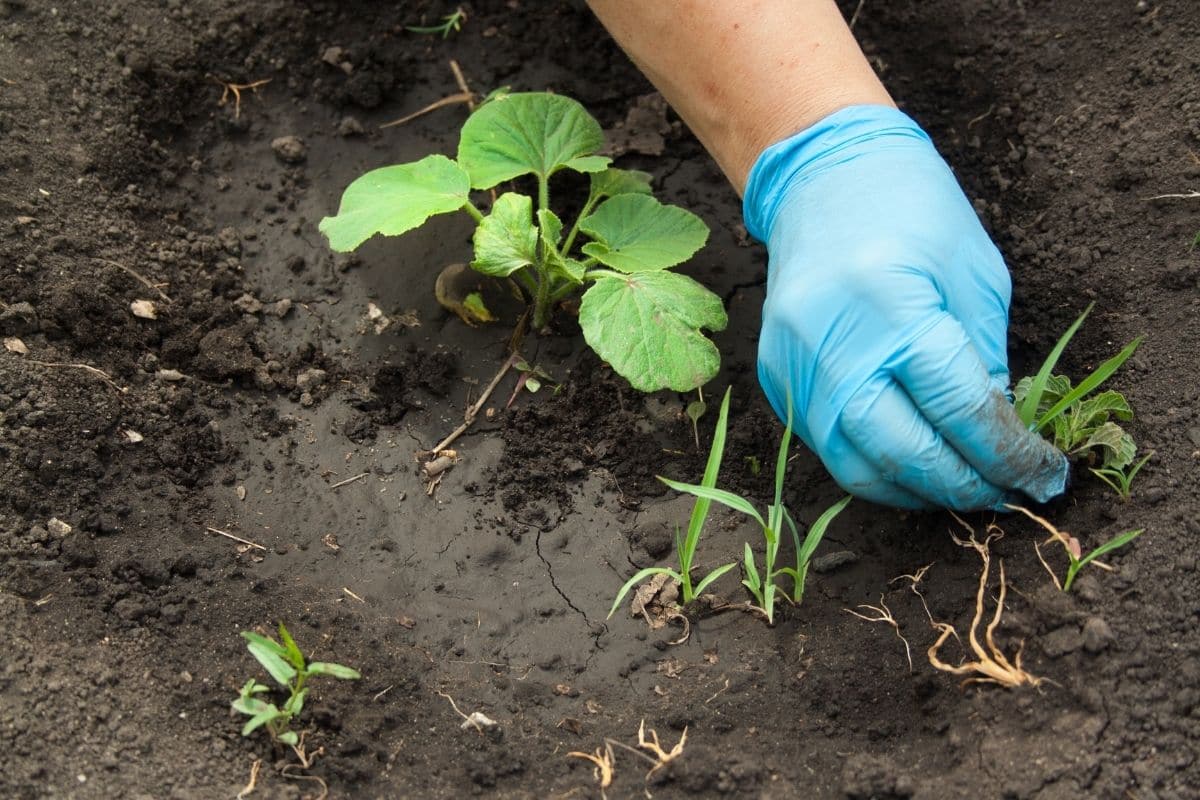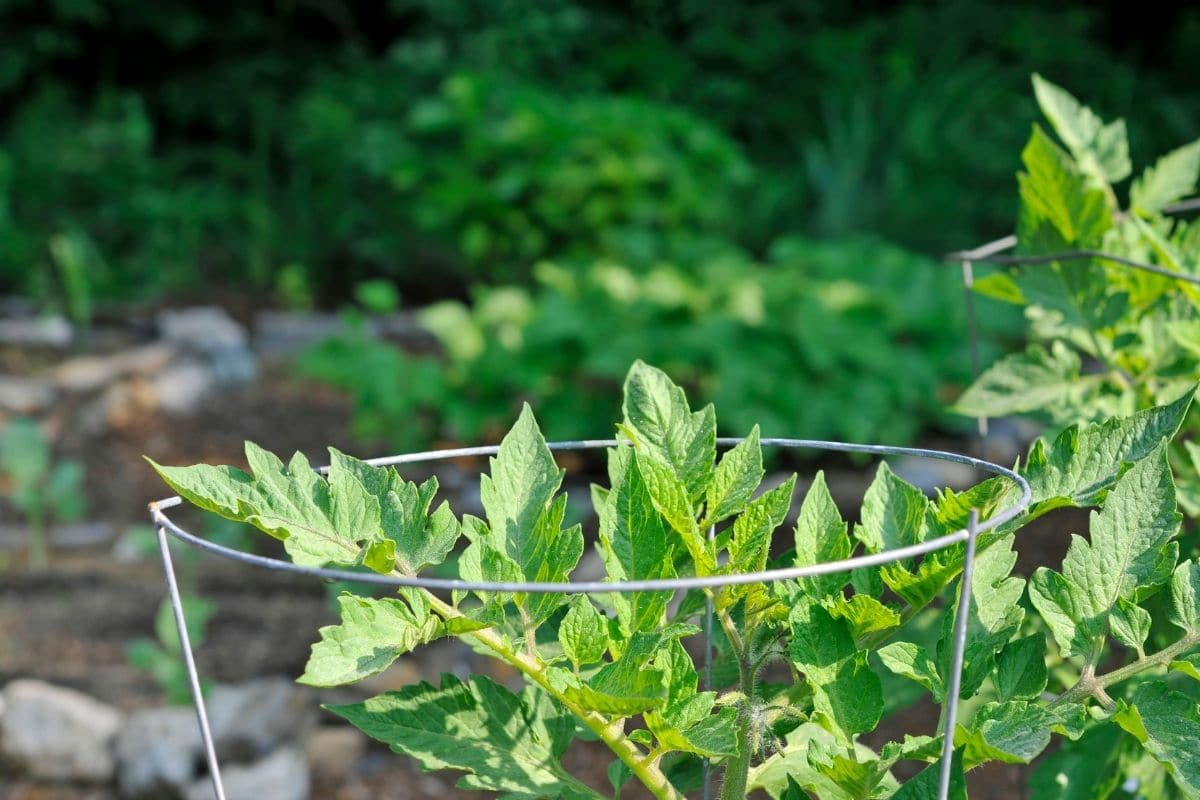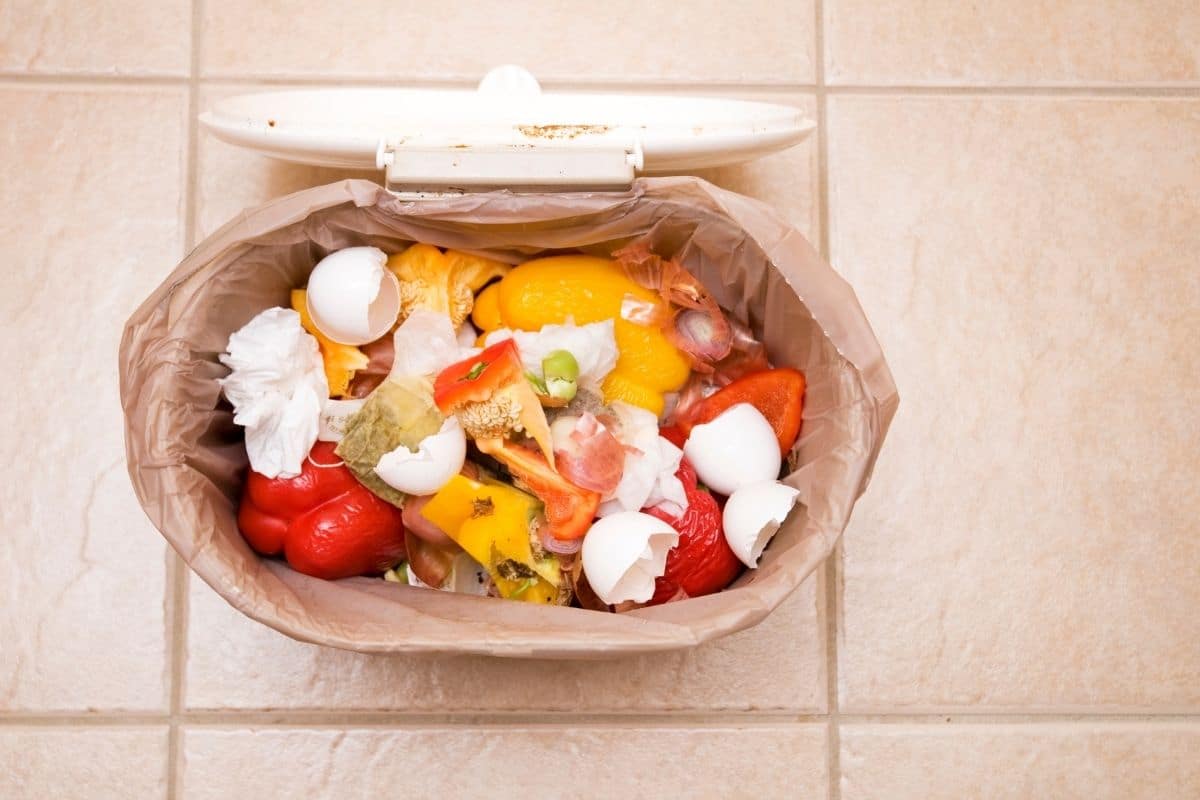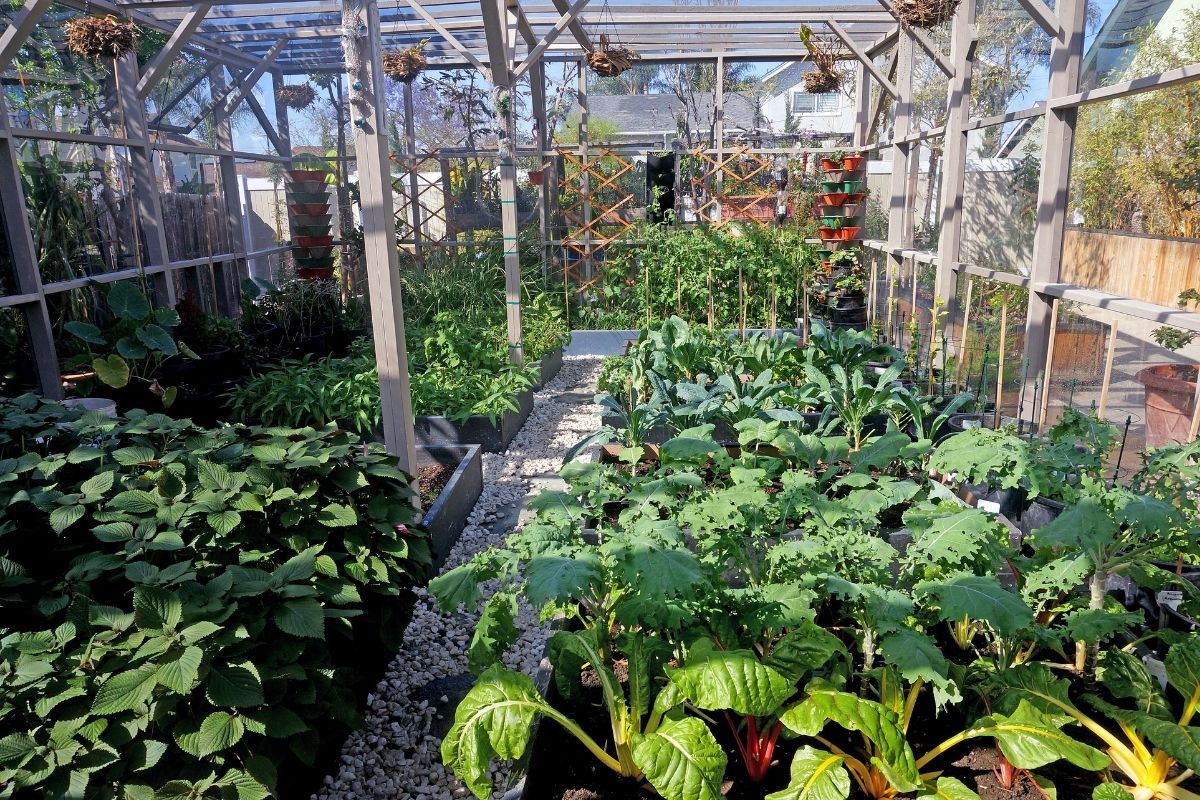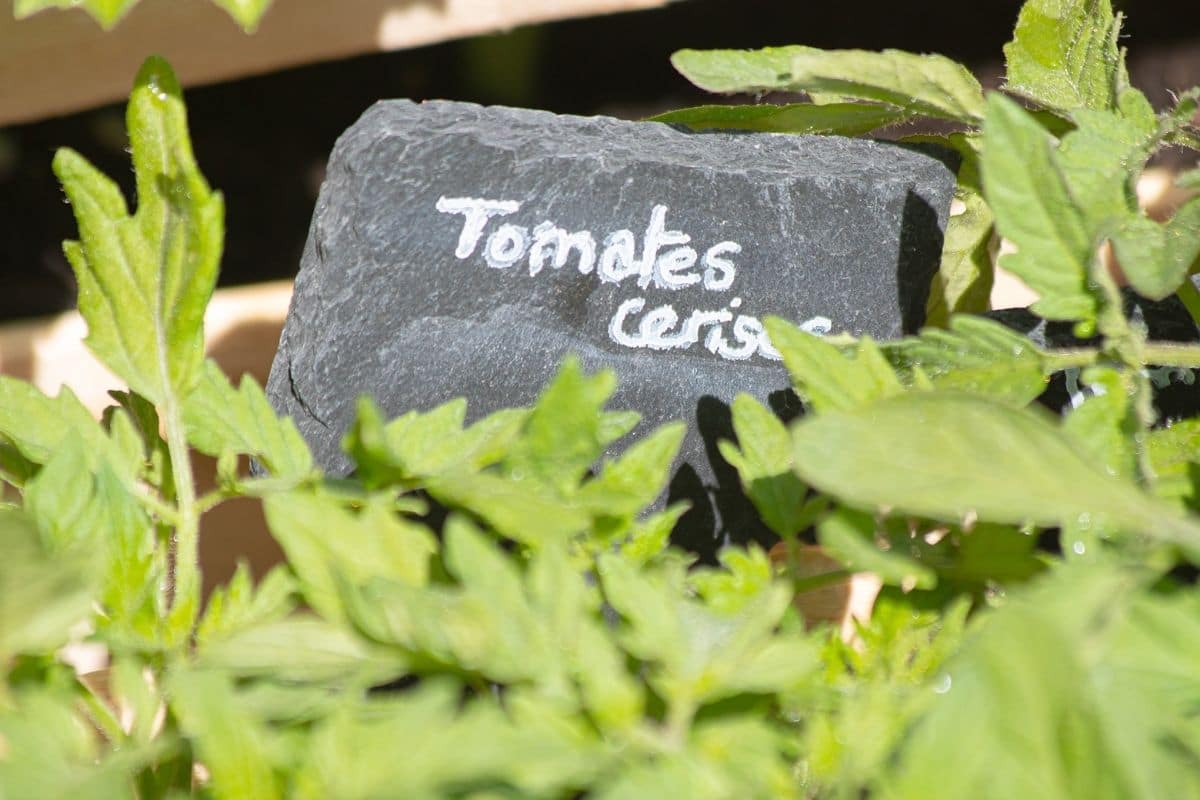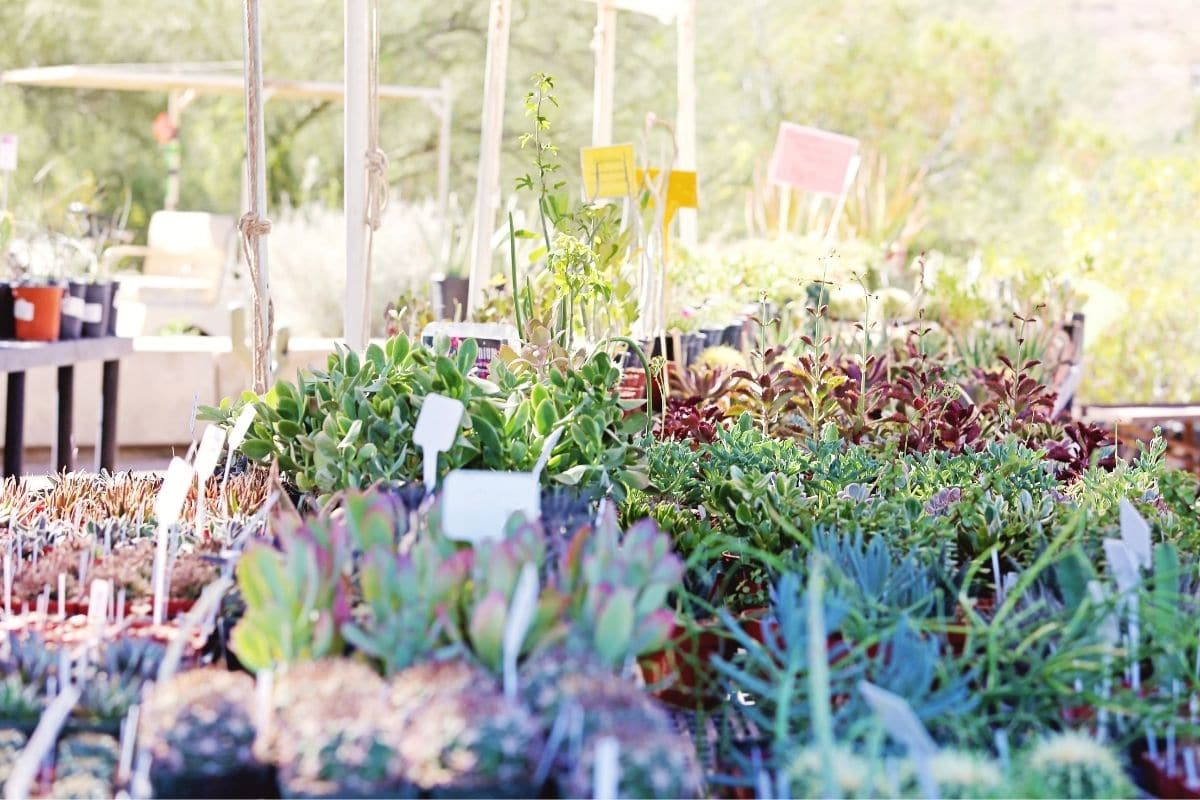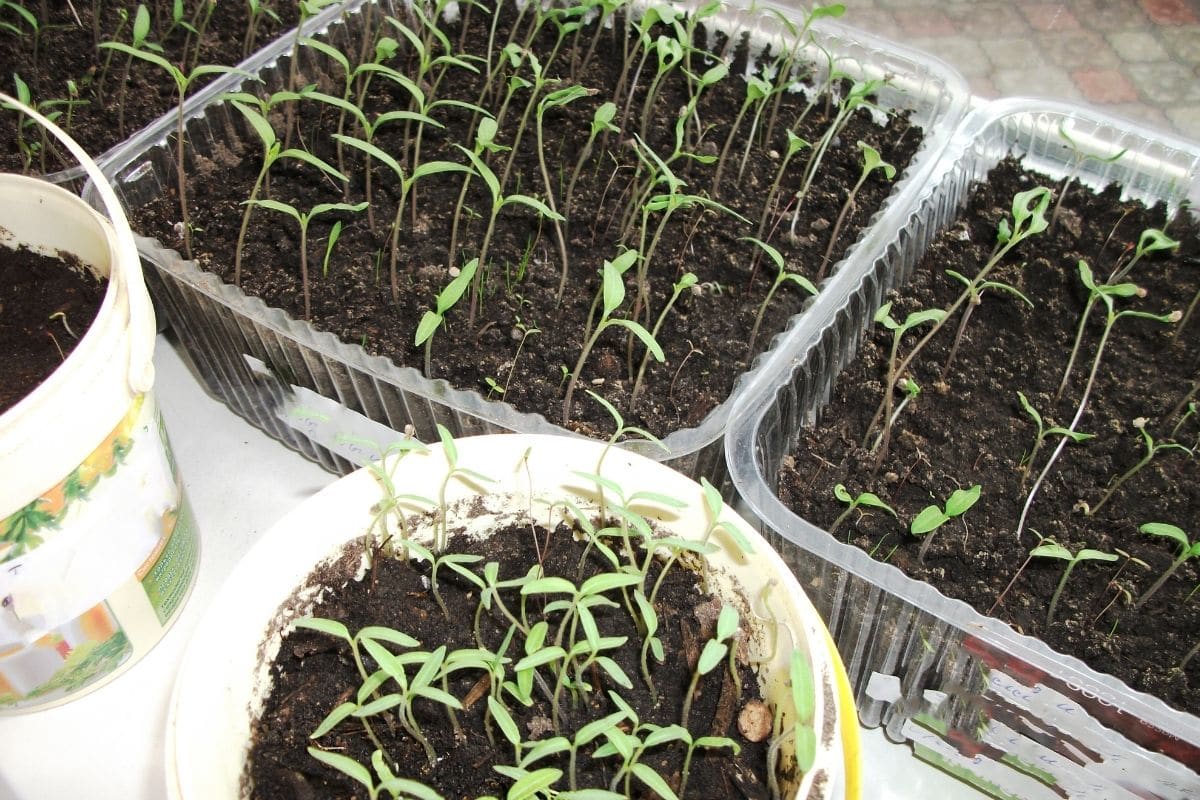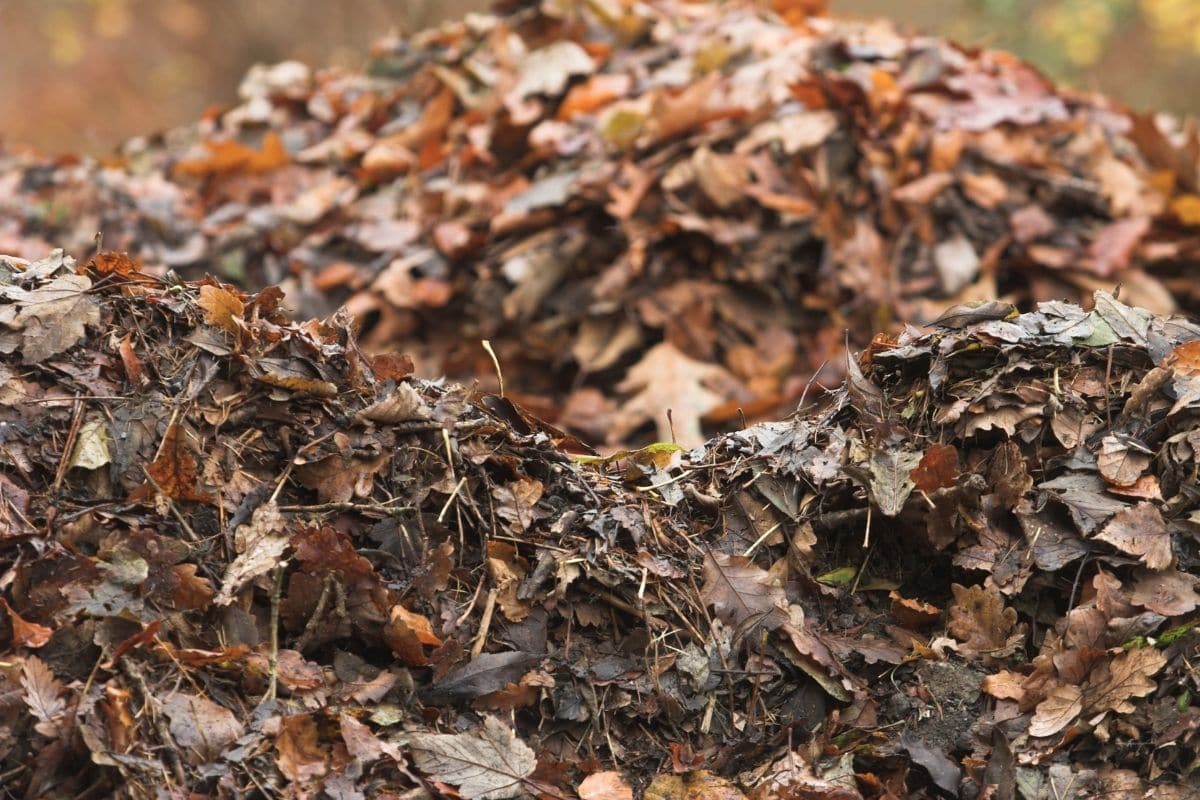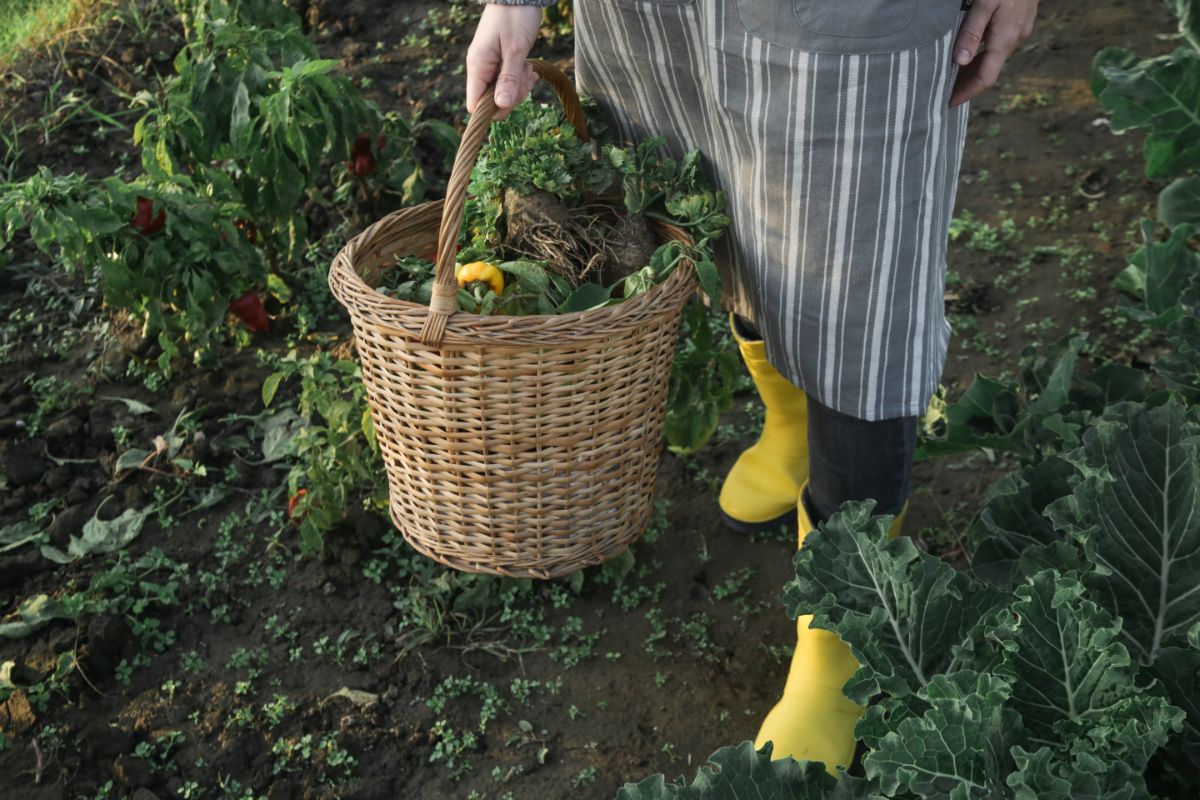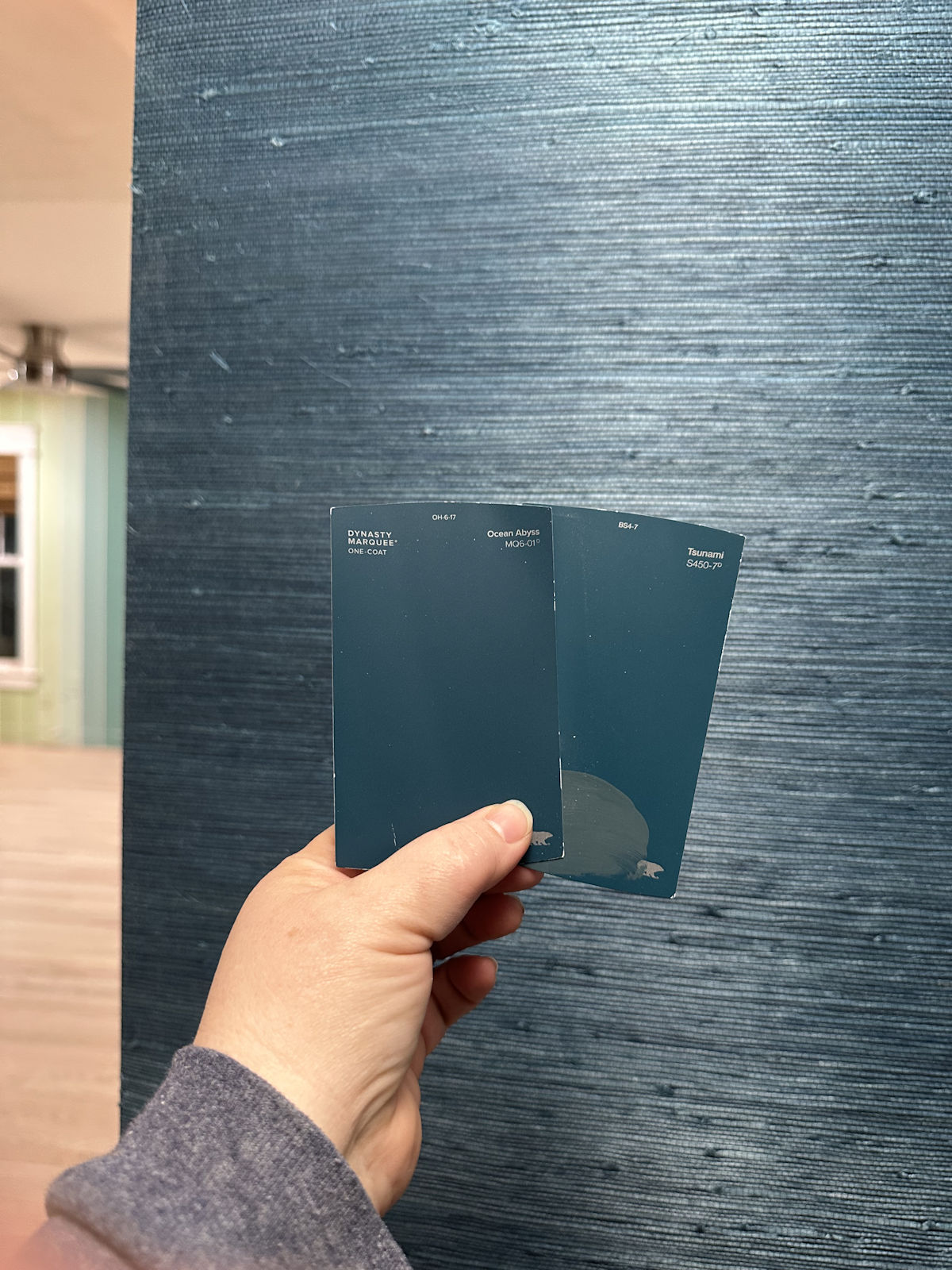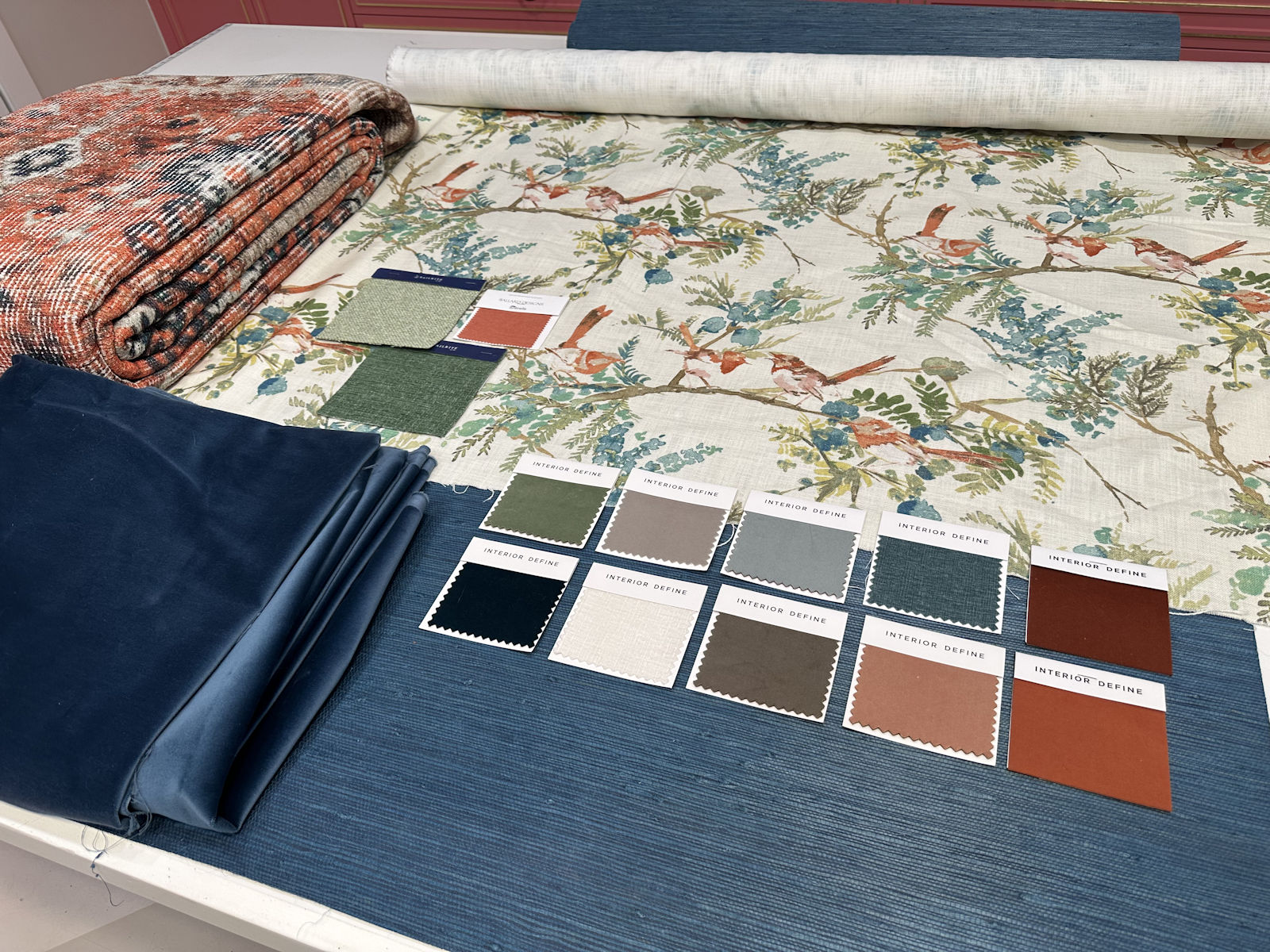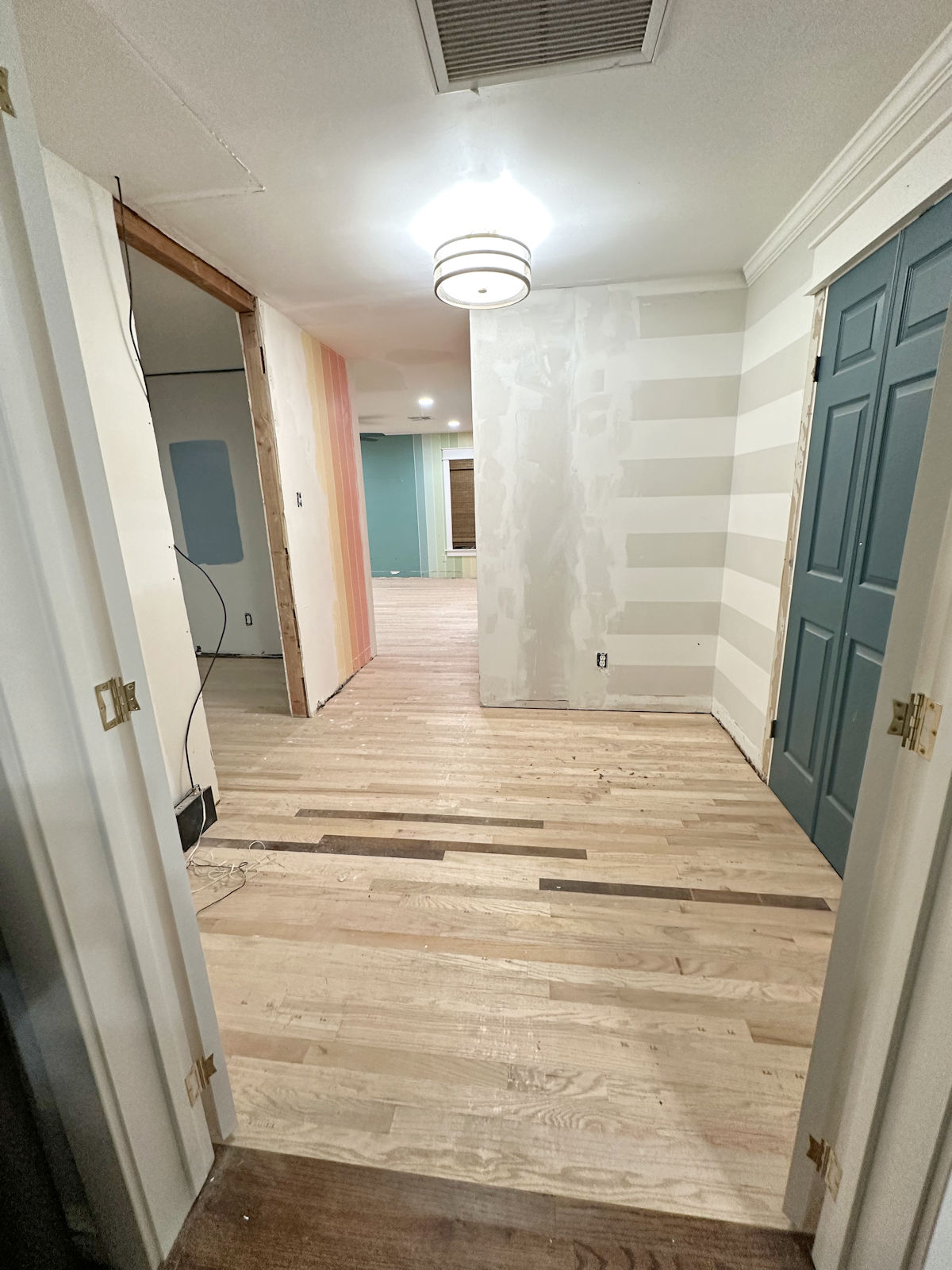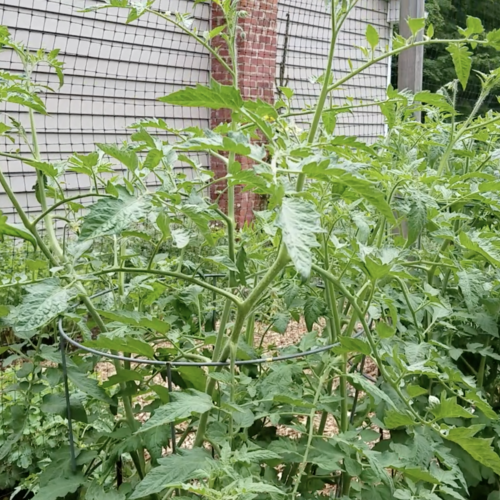As a new gardener, you might be nervous about all the things you should and should not do to maintain a healthy, productive growing space.
Whether you have a green thumb or not, vegetable gardening requires a fine combination of talent, knowledge, and experience that is difficult to acquire – at least at first. Your best bet is to avoid making the most common gardening mistakes.
Things You Should Never Do in the Vegetable Garden
Not sure what those mistakes might be? Below you will find some of the top things people make mistakes doing in their vegetable gardens. Along with these, I am going to give you some great ideas to help bolster your success and increase your garden harvests.
You may also want to check out these great tips for urban garden success, as well as ways to start indoor seedlings to get your garden off on the right foot this year. Anyone can have a thriving vegetable garden, with the right tips and steps!
1. Watering Every Day
While your garden needs water – and plenty of it! – a common vegetable gardening mistake is assuming that your garden needs to be watered every single day.
Don’t fall into this trap. Not only will your garden become dependent and needy, with your plants forming shallow roots that don’t do well in times of drought, but overwatering can also cause your plants to suffer in other ways. They might rot or fail to set fruit at all.
Instead, water just one day a week, but do so deeply, providing an inch or two of water if this hasn’t been provided via natural rainfall. Not only will your garden be healthier, but it will be more drought-tolerant, too.
I love using irrigation systems, even in small gardens. Things like a timed drip watering system can help you stay consistent without overwatering your seeds or seedlings.
2. Ignoring Shady Spaces
Plenty of people neglect certain corners of their gardens, assuming that they can’t grow in various sections because they are too shaded. That’s not the case! You can easily grow a garden in a shady section of your garden as long as you choose the right plants.
A few shade-loving crops for you to consider? Kale, broccoli, and lettuce. All of these vegetables thrive in cooler, shadier conditions, and will help fill in those bare spots of your garden with ease. This definitely goes right into the tips for having a larger garden harvest easily. There are a surprisingly large number of misconceptions about gardening.
3. Overfertilizing
Your garden vegetables need lots of nutrients in order to grow strong and healthy, but you should never use fertilizer unless you’re sure your garden actually has a nutrient deficiency that needs to be addressed. In fact, adding more nutrients is not a guarantee that your crops will grow better, as plants only absorb nutrients when they need them. Some fertilizers take several months to work into the soil and excessively fertilizing with certain nutrients can often lead to deficiencies in others.
Therefore, you should only fertilize when you’re positive that your soil is deficient. Conduct a soil test before adding anything to the soil. Once you decide what your garden needs, consider using some of these organic fertilizer options.
4. Using Synthetic Fertilizer
Not all fertilizers are built alike. In fact, you should avoid using synthetic fertilizers because they contain chemicals that are harmful to plants. Rather than using chemicals, mix up your own compost for a healthier, more holistic garden. Natural fertilizers like compost not only add nutrients but also build up the soil rather than depleting it, too.
You may also be interested in this list of great ideas for DIY compost bins as a great place to begin. It’s so much more fun to add your own hand-built bin to your garden!
5. Loading Up on Pesticides
Using pesticides is a no-no in the vegetable garden for several reasons. Not only can pesticides put your plants at risk by killing beneficial bugs that your garden needs for good health, but they can also kill pollinators.
Instead, adopt more garden-friendly methods such as companion planting. You can also use more natural pesticides, like vinegar and diatomaceous earth, to keep pesky pests at bay.
6. Planting in Bare Soil
This one might confuse you at first glance – aren’t you supposed to plant in the soil?
Yes, you are – but not without amending it first! In fact, it’s important that you take the time to amend your soil with organic matter before planting so that your soil is healthy, fertile, and ready for new crops. Use a bit of compost a few months before you plant. This will get all kinds of beneficial microbes going and it will also help improve your yields.
Don’t know what amending soil is? Check out these tips for amending your garden soil to get started!
7. Planting All Seeds At the Same Depth
Another common mistake that rookie vegetable gardeners make is planting all of their seeds at the same depth. Normally, you can figure out how deep your seeds need to be planted by looking at the seeds themselves – the size of the seeds should give an indication of how deep they need to go. The smaller the seed, the more shallowly it should be sown.
Planting your seeds too shallow can cause them to dry out before they sprout. Plant too deep, and they might not get the sunlight, water, or nutrients they need to sprout. If you aren’t sure how deep to plant, just check the seed packet for guidelines.
8. Crowding Your Plants
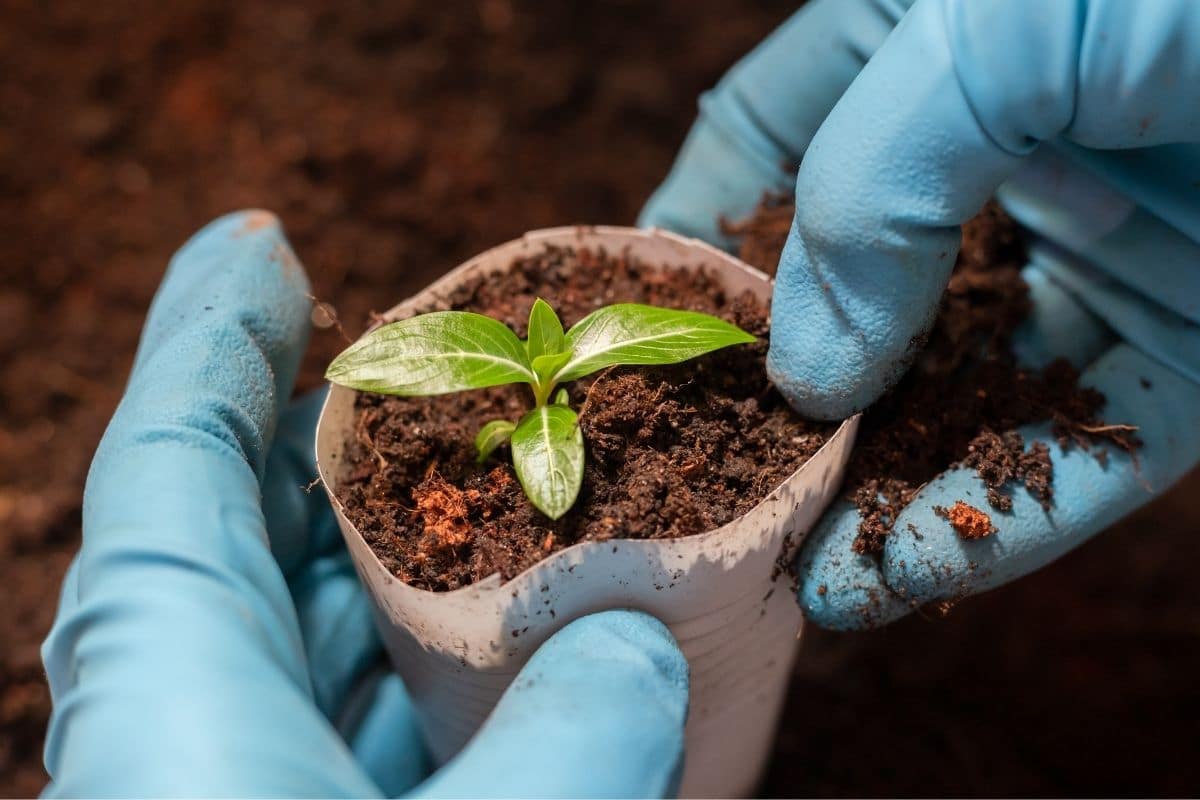
When sowing your seeds or transplanting seedlings, it’s vital that you consider the spacing between them.
Plant them too close together, and they’ll compete for water, sunlight, and nutrients. It can be tempting to plant seedlings in tight rows, particularly when they are small and haven’t yet reached their mature size.
Try to be patient and think of the plant’s mature size, though – remember that although not all of your transplants will survive (and all of your seeds won’t necessarily germinate), you need to keep in mind that your plants are going to get much bigger.
Make sure to check out these reasons why your seeds don’t germinate if you are struggling to get started with your garden.
9. Going Big
They say go big or go home, and in the vegetable garden, that can sometimes be true. However, if you’re new to gardening, you should avoid starting out with a goliath plot. It will become very easy for you to be overwhelmed by all the chores of weeding, watering, and managing diseases and pests.
Instead, start out small and just plant a more restricted, manageable area. Choose plants that are easy to grow like lettuce, tomatoes, and green beans. As you gain more experience, you can venture on to more challenging vegetables like broccoli or kohlrabi! And if you are tempted to plant too many things, check out something like the Garden Tower that lets you plant multiple plants in one container.
10. Planting Too Early or Too Late
Planting too early or too late can spell disaster for your garden. It’s more common for gardeners to start their plants too early, however. And who could blame you? By the time spring rolls around, you’re likely chomping at the bit to get back in the garden.
However, it’s vital that you wait until the weather has warmed up. If you live where temperatures could still drop below freezing, you should avoid setting out fragile crops like cucumbers, melons, and tomatoes. Make sure these stay protected until the nighttime temperatures consistently hover at around 55 degrees – no exception! Unless you’re growing in a greenhouse, that is.
11. Ignoring Weeds
Some vegetable gardeners take a “see no evil, hear no evil” approach when it comes to weeds in the garden. Don’t let weeds get the upper hand!
Weeds will easily choke out your crops and compete with them both for nutrients and moisture. Unfortunately, some kinds of weed seeds can remain dormant in the soil for decades, producing hundreds of thousands of seeds per plant.
That’s why it’s so important for you to eliminate weeds as soon as you see them. You might assume that allowing one weed to remain where it is and to set seed is not the end of the world – however, you’ll find yourself combatting this problem and making up for your mistake for years.
Use mulch to get the upper hand on weeds when you plant. Fight the urge to use chemical herbicides in your food garden and instead, use a sharp how to cut weeds that do eventually emerge.
12. Failing to Provide Adequate Support
Make sure you take the time to support top-heavy plants in the garden. There are several kidneys of crops, including pole beans and tomatoes, that will topple over if they aren’t staked or trellised as they get larger. Tomatoes grow well in cages designed specifically for them, while pole beans should be grown on a trellis.
Whatever your preferences might be, just make sure you give your plants the support they need in a vegetable garden. Otherwise, air won’t be able to circulate and your plants won’t be healthy and productive. I love making my own supports, and there are tons of DIY plant cage ideas on this list to start with!
13. Composting the Wrong Things
So you started a compost pile – that’s awesome! In fact, adding compost to your soil is one of the best ways to increase organic matter and improve the productivity of your garden plot.
However, you can’t add just any old ingredients to your compost bin. Adding these ingredients can not only fail to improve your compost, but it can harm it by adding pathogens and attracting pests:
- Pet waste
- Meat scraps and bones
- Grease and oil
- Diseased plants
- Weeds with their seeds
- Any wood that has been treated with chemicals
- Dairy products
- Glossy paper
- Sawdust
- Walnut shells (they contain allelopathic chemicals that can inhibit plant growth)
- Plastic
- Aerosols, batteries, and other chemicals
If you decide to create your own compost, make sure you check out this full list of items you can and cannot compost.
14. Thinking You Can Grow Any Old Plants
That’s not to say that we don’t have faith in you and your gardening skills – we do! However, it’s important that you consider your climate zone when you are planting your garden. Too many people start a vegetable garden that ignores the conditions of their local climate. You can’t grow tropical plants in zone three, so don’t try. Trying will end up with you just going to be disappointed and you’ll spend way more time, energy, and money trying to fit the plants into your garden than you really should.
Don’t forget the unique conditions that might affect your specific garden, either. When planning your garden, it’s not just your USDA growing zone that you need to consider. You also need to pay attention to your microclimate, which is affected by things like wind, sunlight, shade, and topography.
Of course, you shouldn’t neglect your soil composition, either – this, too, can play a major role in which plants you can successfully grow.
15. Planting the Wrong Cultivars
Pay close attention to the specific planting requirements of the cultivars of plants you have chosen to grow – believe it or not, a tomato is not just a tomato. Each plant cultivar has its own unique requirements and its own unique taste, too. Make sure you are growing crops that you know how to grow and more importantly, those which you will enjoy eating.
Speaking of tomatoes, make sure you check out this list of mistakes people make when planting tomatoes. Tons of tips here to make sure your tomato harvest is amazing!
16. Endless Digging and Tilling
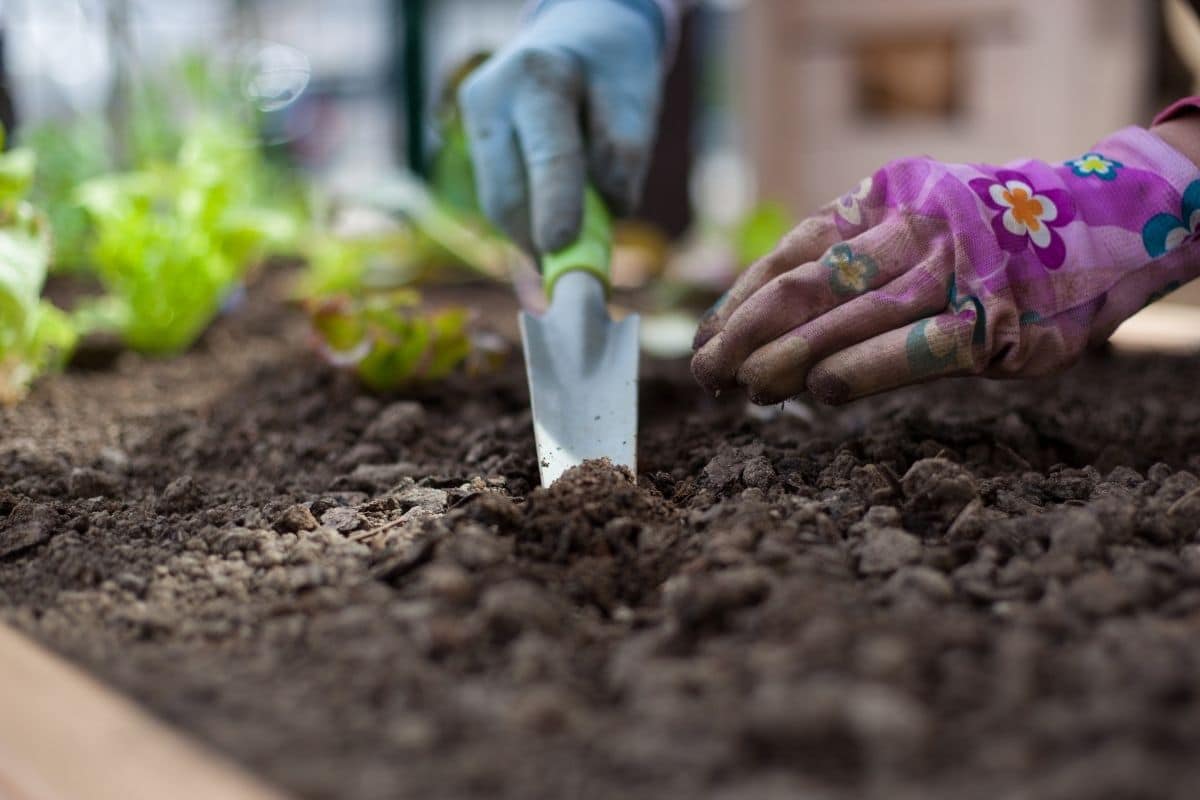
Did you know that some of the healthiest, most productive gardens have been grown in soil that was never tilled? In fact, over tilling is one of the biggest disservices you can do to your garden, as it harms fragile soil life and makes the soil more compacted in the long run.
Instead, implement a no-till gardening system by using mulch and sheet composting to grow a healthy, productive space. It’s less work for you and better for the soil, too.
17. Spending a Fortune
There are plenty of ways to grow a vegetable garden that don’t require you to shell out hundreds of dollars – you just need to get creative. Rather than spending thousands of dollars on your new garden, look for free materials like soil, seeds, and planting containers. Repurpose what you have and start small so that you can keep your budget under control.
I love that you can make upcycled seed starter kits with so many different items you already have on hand in your home. It truly doesn’t have to take much money to create a garden that thrives.
18. Not Thinning Seedlings
It can be incredibly heartbreaking to kill seedlings that you just planted. However, you might have to – it’s not cruelty, it’s kindness! When sowing fragile seeds like carrots or lettuce, you may have to go back in later and remove some of the seedlings that emerge. This will enable the stronger seedlings to form deeper roots without being crowded by the other seedlings.
Take comfort, though – depending on what you’re thinning, you may be able to use your thinnings in salads.
19. Leaving the Soil Bare
Even if you don’t plan on growing anything in a certain section of your garden, you should never leave the soil bare. This can leave it susceptible to erosion from the wind or rain, washing away valuable nutrients that you might want your plants to be able to use later on. Instead, plant a cover crop or use an organic mulch in the downtime.
20. Walking Anywhere You Want
One final mistake that people make in their vegetable gardens? Going wherever they want! When you plan your garden, make sure you factor in walkways and other spaces so that you stand on and compact your growing area as little as possible. That way, you will be sure that your soil doesn’t become compacted and can continue to do its job effectively.
There you have it! 20 things you should never do in the vegetable garden – and what you should be doing instead. Armed with this knowledge, you have everything you need to grow a productive plot this year. Now get growing!

